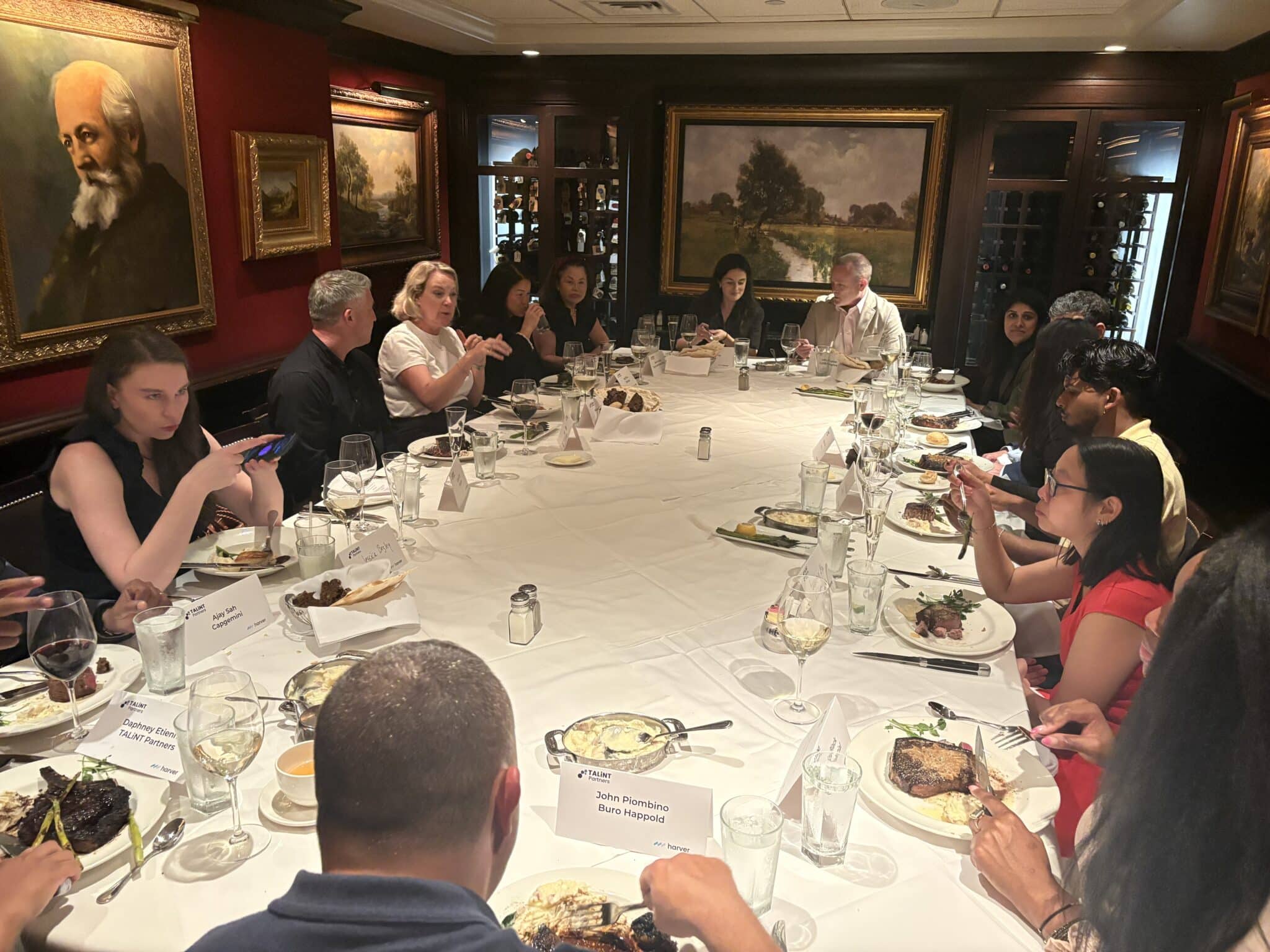In today’s fast-changing world of talent acquisition, digital transformation has become a necessity rather than a future goal. For talent acquisition leaders in the APAC region, developing a digital-first recruitment strategy is essential to attracting top talent, enhancing workforce skills, and preparing employees for the digital era. We’ve considered how technology can reshape recruitment, and here’s our take on how it can help you transform your process and keep your organisation competitive in the talent market.
Leveraging technology to attract talent
The digital age has transformed how we connect with potential candidates. Traditional recruitment methods are being supplemented, and in many cases, replaced by digital tools and platforms that offer wider reach and added efficiency. But what technology would suit your business?
Artificial intelligence and machine learning can help streamline the recruitment process by automating repetitive tasks like CV screening and candidate matching. These technologies can analyse vast amounts of data in short spaces of time, identifying the best suited candidates based on predefined criteria. Saving businesses time as well as reducing bias.
Social media platforms like LinkedIn, Facebook, and Twitter have become powerful tools for sourcing and engaging with candidates. By leveraging these platforms, recruiters can reach a broader talent pool, engaging with more passive candidates, and build a strong employer brand.
Applicant Tracking Systems (ATS) can significantly enhance the efficiency of recruitment processes by managing job postings, applications, and candidate communications in one centralised system. This technology can help recruiters keep track of each candidate’s progress, ensuring a more seamless hiring process.
Video interviewing tools have become all the more essential, especially in the wake of the pandemic. These tools allow recruiters to conduct interviews remotely, saving time and resources while providing a more flexible, accessible, adn convenient experience for prospective candidates.
Upskilling the workforce
As technology continues to evolve, changing the way we work, so too must the skills of the workforce. Upskilling is essential to ensure that employees can effectively use new technologies and adapt to changing job requirements. Here are some strategies your organisation could utilise:
Implement continuous learning programs that offer employees access to online courses, workshops, and training sessions. Focus on both technical skills, like data analysis and coding, and soft skills such as communication and leadership. These programs help employees continuously improve and adapt, while also showing the organisation’s commitment to their professional growth.
Establish mentorship and coaching programs to help employees develop new skills and advance their careers. Pairing them with experienced mentors offers personalised guidance, promotes knowledge sharing, and fosters continuous improvement. These programs also boost engagement and retention by showing the organisation’s commitment to nurturing talent and supporting long-term career growth.
Encourage cross-functional training to help employees gain a broader understanding of the organisation and develop a diverse skill set. This approach enhances collaboration and innovation by exposing employees to different departments, fostering a more holistic business perspective. It also breaks down silos, creating a more agile and adaptable workforce better equipped to meet changing business needs.
Offer certification programs to validate employees’ skills and knowledge. These programs boost confidence, recognise expertise, and demonstrate a commitment to their growth. They also foster a culture of continuous learning, making employees feel valued and supported. Such initiatives enhance the organisation’s reputation as a forward-thinking employer that prioritises talent development and retention.
Preparing employees for the digital age
Preparing employees for the digital age requires both upskilling and fostering a culture of embracing technology and innovation. Here are some steps to prepare your workforce for the digital future:
Encourage a digital mindset by promoting a culture of innovation and experimentation. This involves encouraging employees to embrace new technologies, take risks, and learn from failures. By fostering an environment where innovation is celebrated and experimentation is encouraged, employees will feel more at ease exploring new digital tools and approaches. This mindset shift can lead to more creative solutions and a more agile organisation that can quickly adapt to changing technology.
It can be useful to provide employees with access to the latest digital tools and technologies that can enhance their productivity and efficiency. This includes collaboration tools, project management software, and data analytics platforms. Investing in these tools not only streamlines workflows but also empowers employees to work more effectively. By equipping your team with the right technology, you give them the ability to focus on high-value tasks and drive better business outcomes. Regularly updating and maintaining these tools ensures that your organisation stays ahead of the curve in digital innovation.
Working to promote digital literacy can help ensure all employees have a basic understanding of digital technologies and their applications. This can be achieved through regular training, workshops, as well as online resources. Promoting digital literacy helps bridge the gap between different levels of technological proficiency within the organisation. By providing continuous learning opportunities, you can ensure that all employees are equipped with the necessary skills to leverage digital tools effectively. This won’t just help boost individual performance but will enhance overall organisational capabilities.
Encourage collaboration where employees can share knowledge and work together on digital projects. This can help break down silos in the workplace and promote a more integrated approach to digital transformation. Encouraging collaboration involves creating spaces, both physical and virtual, where employees can easily connect and exchange ideas. Implementing collaborative platforms and tools can facilitate seamless communication and teamwork. Promoting collaboration harnesses your workforce’s expertise, leading to innovative solutions and a stronger, more cohesive organisation.
Looking ahead
As digital transformation continues to reshape recruitment, it uncovers exciting opportunities to attract top talent, enhance workforce skills, and prepare employees for the future. For TA leaders in APAC, adopting a digital-first recruitment strategy will be crucial to remain competitive and drive sustainable success. By embracing technology, committing to continuous learning, and cultivating a digital mindset, organisations can build resilient and future-ready teams.





